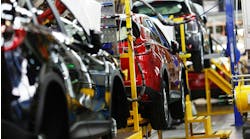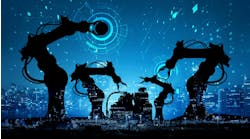Adopting an AI strategy in manufacturing in the wake of global change
By Kurt Muehmel, chief customer officer at Dataiku
The pandemic has left many industries scrambling to adjust financial models, customer engagements, and go-to-market strategies, all while adapting to remote collaboration in newly distributed teams.
Those in the manufacturing sector, who are simultaneously impacted by workforce shortages, supply chain disruptions, and rapidly shifting consumer behavior, are facing some of the most unique challenges.
The companies who work closely with data in the course of their business operations have had a slightly better time navigating these uncharted waters.
What we’re seeing in manufacturing is an entirely new set of applications of AI that provide powerful insights that guide business-critical manufacturing decisions. But even with the best AI models and predictive analytics at a company’s disposal, this pandemic continues to show that there will always be a need for human intuition and interaction when it comes to AI in the enterprise.
The data is null
In the early days of 2020, no manufacturer could have predicted how its business—and the world—would change over the course of just weeks. Even for those who already took advantage of advanced machine learning and data analytics, this presented an interesting conundrum: all their predictive models—those that forecast sales, project costs, returns on marketing spend, those that help ensure materials from vendors around the world map back to production outputs that then meet consumer demand—were all suddenly null and void. No longer does year-over-year behavior give an accurate indication of potential demand, because both supply and demand have been rocked by the virus’ global impact.
At the same time, we’ve seen manufacturers develop entirely new use cases for AI to help them weather this storm and adjust production, understand consumer behavior, and ensure the two are aligned. AI can uncover previously unseen patterns in data, recognizing them and making them actionable in a matter of hours or even minutes. And scaling of those patterns of insights can result in cost efficiencies, savings or return on investments.
For example, Dataiku and Kayrros built a near real-time activity index for the automobile industry to compare the impact of coronavirus on several US manufacturers and their respective supply chains. Upon processing an anonymized geolocation data set of 31 plants dating back to January 2017, our model revealed that production has resumed on all sites, but with varying speeds of recovery depending on the company and geographical location. We’ve seen that companies such as Fiat Chrysler or General Motors have been slower to return to normal activity, with workforce levels at just 80% of those from June 2019.
Manufacturing a data-driven culture
If a manufacturer isn’t taking full advantage of the opportunity that AI and machine learning provides, there’s no better time to invest in building a culture that embraces data-driven insights across departments and functions. For so long, data and insights were relegated to spreadsheets owned by business analysts; only more recently has this transitioned to the minds of data scientists. Now, the opportunity exists for people on the factory floor—not just data scientists and analysts—to use data in the course of their everyday work.
One major factor enabling the shift to a company-wide data-driven culture is the rise of “explainable AI”, which takes AI out of the black box in which it used to reside and makes it possible for people to understand, trust and deploy with ease, especially in enterprise use cases.
While explainable AI has empowered a new set of roles with insights, the companies who do data best never lose sight of the fact that humans are vital to the equation. This is true for both those developing AI models and adjusting them based on real-world context, but also for the humans at the other end of the equation, who must be able to understand and use that data effectively to further business goals.
The human side of AI
While there’s been much talk of Industry 4.0 and innovation in manufacturing, too many in the sector continue to lose out on opportunities because AI can seem like a high-tech buzzword with minimal application to their day-to-day operations. Worse still, there continue to be misconceptions about AI displacing workers.
While it's true that effective use of data can reduce costs for a manufacturer, the upskilling opportunities for workforces are equally as enticing. Ultimately, AI will always need human input, for scenarios like the one we’re facing now, but also for the myriad other ways “normal” can be disrupted for manufacturers: from natural disasters to geopolitical conflicts, to the ever-evolving behavior of the end-users of products.
Those without a data-driven culture, and without the insight that data provides, are likely to slow or even halt production until there’s more clarity and certainty. They might miss out on revenue opportunities in the meantime, or continue business as usual and take on unnecessary risk as a result.
But for those adopting AI and machine learning, this unprecedented time—while challenging for all of us—represents an interesting problem that data can help solve.



